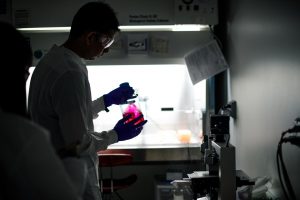Great advances continue in the field of stem cells, equally exciting is what’s occurring with microvessels. In two recent papers published by a Feng Zhao, associate professor of biomedical engineering at Michigan Technological University, she explains the uniqueness in which microvessels can play a role in speeding up recovery from heart surgery.
"Myocardial infarction is a big problem and currently there is no good treatment for it," she said. A cardiac patch could help following a heart attack. "The cardiac patch is completely biological, comprised of stem cells with vasculature that mimics real tissue, that could help repair a heart."
Zhao performed extensive analysis which backed her findings. She reviewed the advantages and disadvantages of six different methods used to align vessels: electromechanical stimulation, surface topography, micro-scaffolding and microfluidics, surface patterning and 3D printing.
"The significance of microvessel organization in 3D scaffolds has largely been ignored," Zhao states. "Microvessels are not the same as cells; people have done a lot of work looking at the alignment of cells but this work on microvessels is still new. Understanding the mechanisms behind microvessel alignment in biomaterials will help us and other biomedical engineers to create better, more refined implants and devices."
To better explain the function of microvessels, Zhao compares aligning microvessels to plumbing, whereby mismatched sizes lead to a poor functionality. When biomimicking can occur alignment, density and dimension of the heart muscle are better matched.
"In the heart muscle, the cells are highly aligned for electromechanical signal transaction and the microvessels are also highly aligned and dense," Professor Zhao explains the utility in microvessels bringing nutrients and oxygen by connecting to native vasculature. Without such a connection, a cardiac patch could cease to function. "But all tissues have this microstructure. It's everywhere. This technology could be used for skeletal muscles, burn and chronic wound healing and nerve regeneration."























